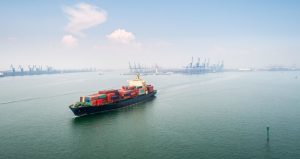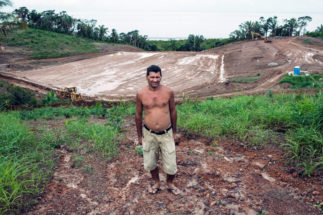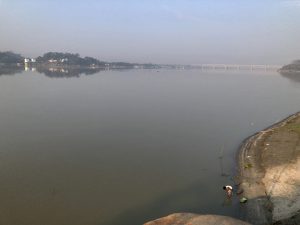Bangladesh’s growing energy demands and China’s interest in expanding its horizon across Asia has made the world’s second largest economy a major investor in the deltaic nation.
According to the Bangladesh Bank, Bangladesh has received about USD 600 million from China in the first half of the current fiscal year, with major investment flowing into power generation and mega infrastructure.
The pace of Chinese investment in Bangladesh is sidelining the country’s previous major development and strategic partners. India used to be its most important, but it has invested only a tenth – only USD 65 million – of what China has during the same period.
The two South Asian neighbours have a strong historic relationship since India supported Bangladesh in its fight for independence against Pakistan in 1971. But in recent years, ties have gradually loosened as Bangladesh has moved closer to China.
As a result, in the fiscal year 2017-18, foreign direct investment from China reached USD 506 million, about one-fifth of total foreign capital flow. There are now about 400 Chinese companies doing business in Bangladesh, including about 200 large companies and 200 other small and medium enterprises.
Bangladesh’s closer economic relationship with China has disappointed India. A particularly painful shift was when the Dhaka Stock Exchange chose to sell a 25% stake to a Chinese consortium of the Shenzhen and Shanghai stock exchanges last year, rather than to India’s national stock exchange, which bid 56% less.
Dirty power
Most of Chinese investment in the 2018-19 fiscal year, USD 407 million, went into Bangladesh’s power sector, specifically to coal-based power projects. These included the 1,300 MW Chinese funded coal power plant in Chittagong, and one in Patuakhali (Payra), close to a famous Hilsa (Bangladesh’s most famous fish) sanctuary. An agreement for a third Chinese backed power plant has recently been signed for a 1,300 MW coal project in Cox’s Bazar.
The government has premised energy growth on a rise of coal-based power going from 2% to over 50% of the Bangladesh’s electricity supply by 2022, with 23,000 megawatts of new coal powered plants in the pipeline.
Chinese and other foreign backed coal powered plant have attracted widespread local protests among people who fear the pollution will damage their livelihoods and they will lose their land.
Many experts question why Bangladesh is betting on coal to power the country’s fast growing economy, as other countries in Asia try to shift away from the dirty fuel amid an intensifying pollution crisis. Prices for solar, wind, and grid efficiency are also predicted to soon fall below coal power in the country.
See: Will Bangladesh’s future be black?
Chinese financial institutions and companies have committed, or proposed, to finance one quarter of the coal plants under development outside of China – 102 gigawatts of capacity spread across 23 countries.
Bangladesh is the country with the most proposed coal-fired capacity and funding from China, totalling USD 7 billion for about 14 GW of capacity, according to a recent report from the Institute for Energy Economics and Financial Analysis (IEEFA). However, most of this capacity is long delayed and still in pre-construction status.
Major infrastructure
It’s not only in the energy sector that China has become a major player. China is also implementing USD 10 billion worth of infrastructure projects in Bangladesh, according to China Daily. This includes the Chinese Economic and Industrial Zone, the 8th China Bangladesh Friendship Bridge, and the International Exhibition Centre.
There are similar trends in trade. China is now Bangladesh’s largest trading partner, said Osama Taseer, president of Dhaka Chamber of Commerce and Industries. Bangladesh is exporting vegetables, frozen and live fish, leather and leather goods, textile fibres, paper yarn as well as woven fabrics, articles of apparel and clothing.
In 2017-18 fiscal, the bilateral trade between the countries was USD 12.4 billion and is expected to reach USD 18 billion by 2021.
Risky business?
China has become a major trading partner for Bangladesh and an important player in the infrastructural development in the country, said Sahab Enam Khan, a professor of international relations at Jahangirnagar University.
He said the benefits of growing bilateral trade and Chinese investment in infrastructure will have positive spillover effect in the trade relations and connectivity projects between Bangladesh and India.
However, the success of Chinese investment in infrastructure will largely depend on the financial viability of the projects and its direct correlation with export returns. Investment in capital markets and Special Economic Zones (SEZs) will also have the potential to bring long-term benefits, he added.
Although Bangladesh’s economy is quite robust, with GDP growth expected to be around 8% this year, the large amounts of loans pouring into the country could increase the risk of indebtedness in the long term, said Michael Kugelman, a South Asia expert at the Washington-based Woodrow Wilson Center.
“Another problem is that many of China’s investments pay little mind to issues of sustainability. While Beijing does give priority to financing the production of renewables, some of its big-ticket investment projects these days revolve around fossil fuels, including a major coal production project in Pakistan. Similarly, many of Beijing’s infrastructure investments involve heavy-duty industrial construction and production, which entails the heavy consumption of water and the use of emissions-belching technology,” Kugelman said.
“Given its immediate need for more energy to feed its growing economy, [the projects are] important enough for Dhaka that it’s willing to overlook the environmental concerns.” he added.
Building the Belt and Road
The new Bangladesh-China economic partnership has flourished since the Chinese President Xi Jinping’s announcement of his flagship ‘Belt and Road Initiative’ in 2013.
Bangladesh is an important partner in both the 21st Century Maritime Silk Road and the Silk Road Economic Belt. The deltaic nation is one of the important hubs of maritime and overland connectivity between the Indian Ocean and China’s landlocked provinces including Yunnan.
![Xi Jinping is the first Chinese President to visit Bangladesh since 1986 [file photo from APEC 2013 / Flickr]](https://dialogue.earth/content/uploads/2016/10/10102526285_a22399cdfe_k.jpg)
Since then, both the countries have signed projects worth over USD 9.45 billion – with cumulative investment of USD 26.6 billion to date, according to China Global Investment Tracker.
This includes the USD 3.3 billion bridge over the Padma river, as the Ganga is known in Bangladesh, completed last year. This will link north and south Bangladesh by road and rail, completing one of the most challenging engineering projects the country has ever built.
Other major projects include establishing a USD 1 billion project to improve digital connectivity and a USD 1.32 billion project to strengthen the power grid network.
Beyond Bangladesh
Chinese investment has also been rising rapidly in other parts of South Asia.
According to China Global Investment Tracker, Chinese companies are investing billions of dollars in different sectors in other countries in South Asia. Between 2016 and 2018, China invested USD 2.59 billion in Pakistan, USD 2.55 billion in Sri Lanka, USD 1.34 billion in Nepal and USD 2.10 billion in Myanmar.
![<p>Wang Jianjun, president and CEO of SZSE, and Pan Xuexian, chair of the SSE Supervisory Board, flank the Managing Director of the Dhaka Stock Exchange KAM Majedur Rahman, at the signing of an agreement on 14 May, 2018 [image courtesy: Dhaka Stock Exchange]</p>](https://dialogue.earth/content/uploads/2019/05/shanghai_stock_exchange-1.jpg)








